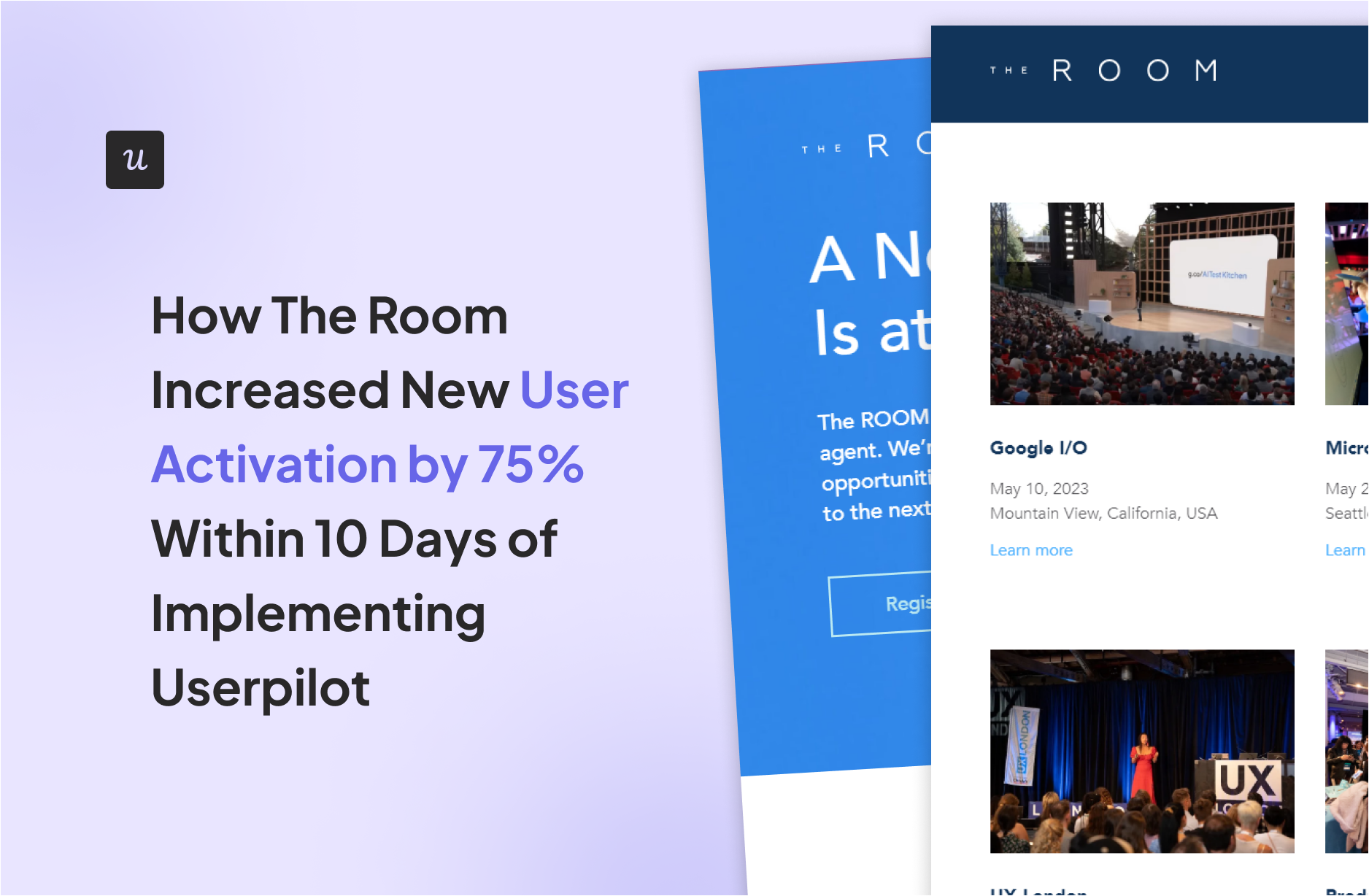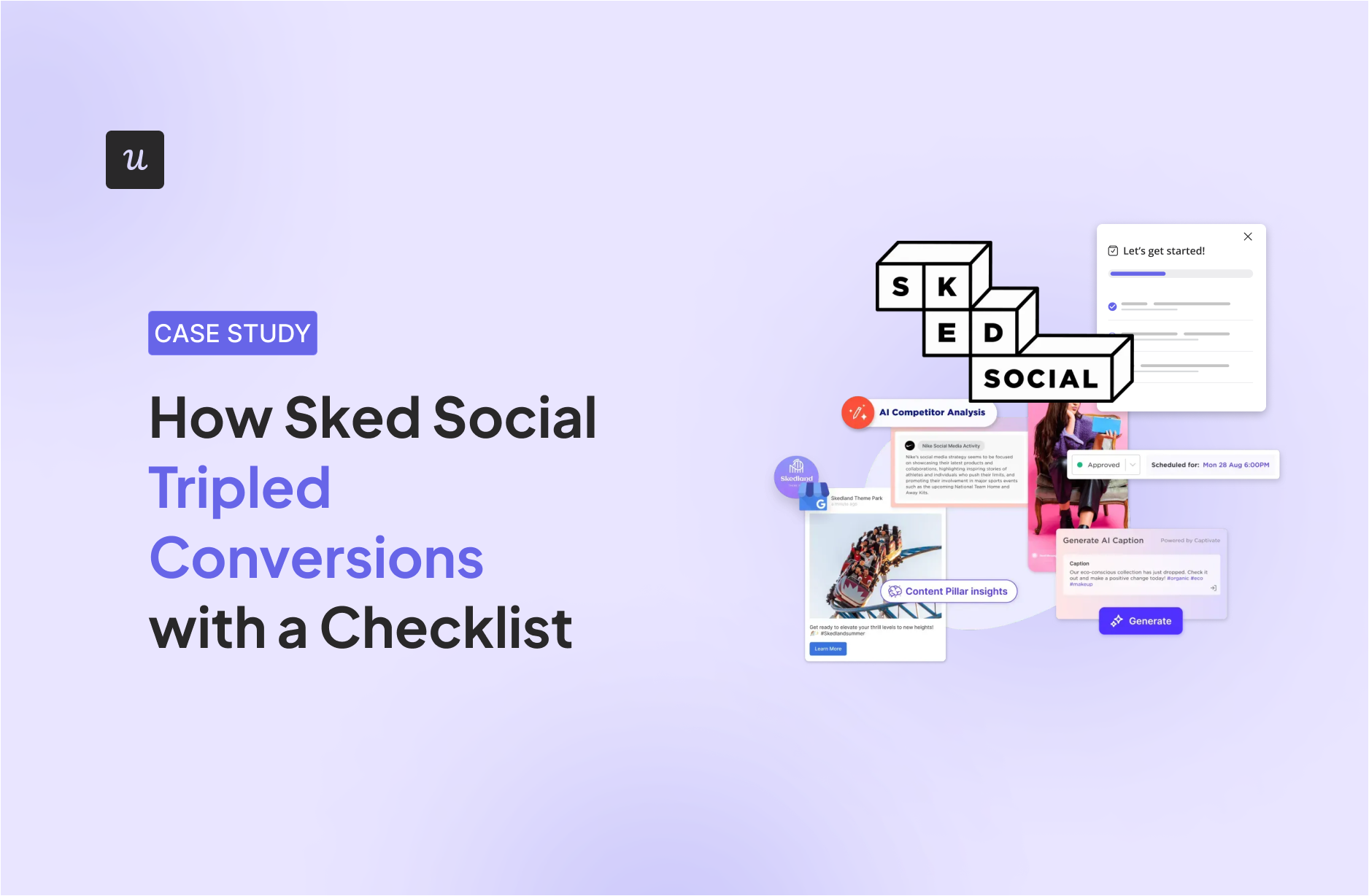
Time to value (TTV) can make or break product/customer adoption. When it takes too long, activation drags and retention stalls.
But what counts as “too long” to reach “first value”?
Our Benchmark Report 2025, analyzing 547 SaaS companies, reveals the answer: 1 day, 12 hours, and 23 minutes. In other words, most users expect immediate time to value within a day or two of signing up. Every hour beyond that increases uncertainty and erodes trust.
In this article, I’ll show you how to calculate your TTV, the industry-specific benchmarks you should aim for, and six practical ways to stay within range.
Try Userpilot Now
See Why 1,000+ Teams Choose Userpilot

What is time to value (TTV)?
Time to value (TTV), sometimes called time to basic value, is the time it takes a new user to experience their first meaningful outcome after signing up for your product. It measures how quickly your product proves its usefulness.
Tracking new customer activation in Userpilot.
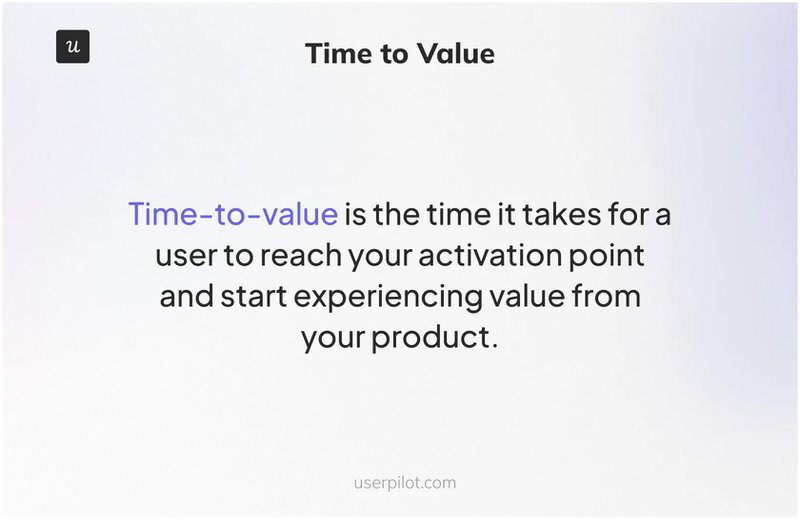
So, what does “first meaningful value” actually look like? Here are a few examples:
- Project management tool: A new user creates their first task and sees it appear in their workflow. This confirms that the tool helps them organize work.
- Analytics platform: A user generates their first report and uncovers an insight they couldn’t see before.
- Email marketing tool: A user sends their first campaign and watches engagement metrics roll in.
- HR onboarding software: A user successfully sets up a new employee and completes all onboarding steps in one place.
- Design or prototyping tool: A user publishes their first mockup and shares it with a teammate for feedback.
Why is time to value the “trust metric”?
Because it reflects how efficiently your product earns (or loses) user confidence. The faster users experience real value, the sooner they trust that your product is worth their time and money.
But TTV isn’t the same as activation or the “Aha!” moment. Let me explain using an analytics platform as an example.
TTV vs. activation
Example:
- TTV: A user signs up and generates their first report that reveals a meaningful insight.
- Activation: The user completes the required action for your business metric (in this case, that’s generating a report).
This means activation is binary; either 1 (activated) or 0 (not activated). TTV, on the other hand, is experiential; it answers “How long did it take the user to reach that activation point and feel the value?”
TTV vs. the “Aha!” moment
Example:
- TTV: The user runs their first report and actually sees an insight they care about.
- “Aha!” moment: When the user understands the potential of the analytics tool. This could be during a demo, when they see how quickly the tool generates insights.
Here, the “Aha!” moment is emotional; it’s the instant the product makes sense. TTV, however, is functional; it’s the moment the product delivers.
Tying the three critical metrics together: The “Aha!” moment is when customers realize the product is worth sticking with, TTV is how quickly users experience that value, and activation confirms they completed the key action tied to it.
💡 Here’s how to make the most of the TTV-activation-Aha! relationship as a product manager:
- Move the “Aha!” moment before signup (strong positioning, onboarding emails, clear messaging).
- Shrink TTV so that product value appears immediately after signup.
A short time to value builds trust, leading to more users staying.
How is TTV calculated?
You measure time from when the customer starts using the product with this formula:
TTV = (First Value Event Time) − (Signup Time)
Where:
- First value event: A specific, trackable action that proves the user has experienced product value, e.g., created their first project, imported a dataset, or launched their first automation.
- Signup time: The moment a customer signs up or starts a trial.
Once you know your TTV, compare it to “SaaS benchmarks by industry” to confirm if you’re in a safe range.
Time to value (TTV) benchmarks by industry
| Industry | Average TTV | Median TTV | Safe if your TTV is… |
|---|---|---|---|
| CRM & Sales | 1 day, 4h, 43m | 2 days, 8h, 16m | Under 2 days |
| Healthcare | 1 day, 7h, 11m | 1 day, 7h, 11m | Around 1–2 days |
| FinTech & Insurance | 1 day, 17h, 11m | 1 day, 17h, 11m | Under 2 days |
| AI & Machine Learning | 1 day, 17h, 19m | 16h, 52m | 1–2 days |
| MarTech | 1 day, 20h, 47m | 2 days, 19h, 22m | Under 3 days |
| HR | 3 days, 18h, 59m | – | Under 4 days |
💡 Note: There’s no median TTV for HR because only one HR company in our study was actively tracking it.
Is your TTV above the safe range for your industry? Or do you simply want to minimize it for competitive advantage? Either way, the strategies below will help you shorten the path to first value.
6 Actionable strategies to reduce time to value
Each strategy below is designed to streamline onboarding, reduce friction, and front-load value:
1. The “empty state” solution (Templates)
Blank dashboards overwhelm new users, and it is common with tools like CRMs, email editors, and website builders. They only make sense if something exists inside them.
With nothing set up, where do users start? How do they see the product potential?
That lack of a starting point, “the empty state,” increases customer frustration and delays value.
But there is a solution: give users pre-built starting points, i.e., templates. The templates will deliver 80% of the value instantly, while the user handles the 20%, i.e., the customization.
Examples of the 80/20 solution:
- Website builders: Add ready-made page layouts (80%) that users can edit immediately (20%).
- Email platforms: Provide pre-designed campaigns (80%) that only need copy tweaks (20%).
Of course, templates alone aren’t enough; users still need a nudge. With Userpilot, you can do this through targeted modals, slideouts, or onboarding checklists. This way, new users hit their first win the moment they log in.
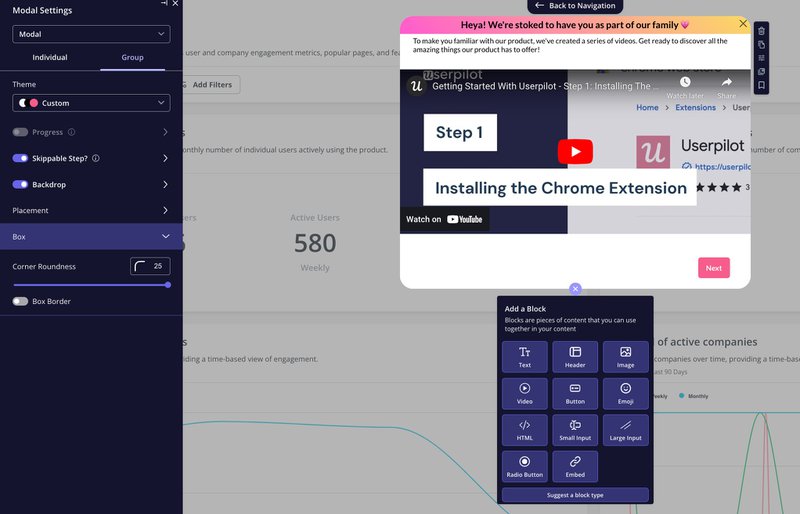
2. Contextual segmentation
When every user gets forced down the same path, despite different goals, they waste time. That’s generic onboarding, and it slows down TTV.
Here’s what you should do instead:
After users sign up, segment them to shorten the customer journey to first value. Ask a simple welcome screen question like “What are you here to do?” Then, route each persona into a tailored onboarding process.
In an SEO platform, for example, it will look like this:
- Route users choosing “Keyword research” to create their first keyword list.
- Direct users choosing “Site audit” to run their first crawl.
Userpilot automates this segmentation and routing. It segments users instantly based on their answers. And then, it guides them into personalized onboarding flows.

Soon, the Product Growth Agent, Userpilot AI, will make segmentation even smarter by predicting the best path for each user.
3. The “Zeigarnik” checklist
The brain is naturally motivated by unfinished tasks (the Zeigarnik effect). But onboarding checklists scarcely make use of that. They are filled with admin steps, so users ignore them, affecting your TTV.
The solution here is to build a checklist with value-generating actions to boost early customer engagement. This means that each step in the flow moves users closer to the first value.
Applying the Zeigarnik effect, you can give users a head start by auto-completing the first step on the checklist, e.g.:
Create your workspace (auto-completed): This builds momentum and encourages the user to finish the remaining high-impact steps.
Userpilot makes the process easy. It lets you create in-app checklists with auto-complete triggers. This way, users see progress from the start and stay motivated to reach activation.
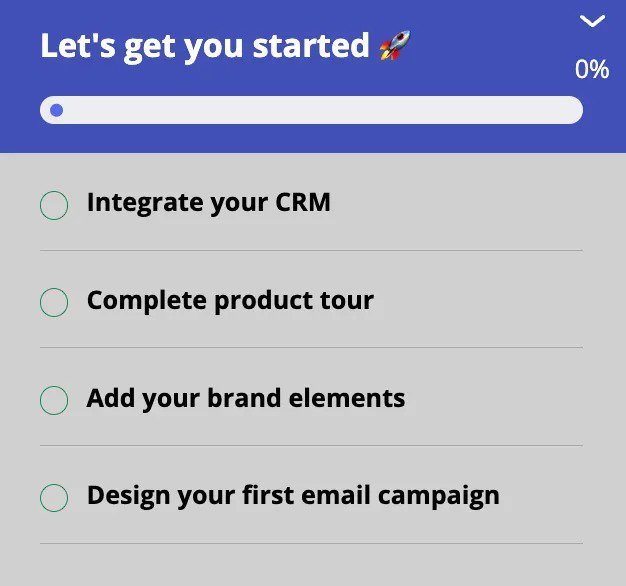
4. Interactive walkthroughs
Too many pop-ups too early, and users are bombarded. That is what traditional product tours do. Despite all the information dump, users still don’t know how to use your product. And eventually, they drop off.
The fix is replacing static tours with interactive, behavior-triggered walkthroughs. They guide users step by step as “they do the task.”
Example:
❌ Explaining campaign creation at signup
✅ Highlight “Create Campaign” only when the user navigates to the campaigns page. Then, guide them through the first setup live.
The latter uses a “learning by doing” approach. As a result, it reduces cognitive load and helps users reach value soon.
You can also apply this approach to your product using Userpilot. It supports behavior-based walkthroughs and contextual tooltips that trigger exactly when users need help.
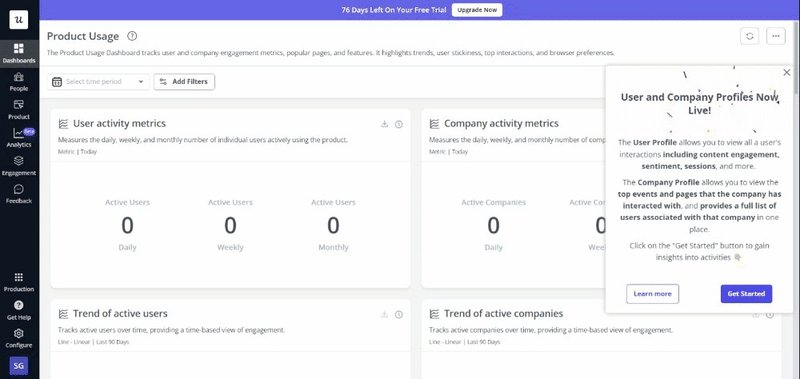
5. Personalization at scale
When users see irrelevant messages or help content that doesn’t match their role or task, they tune out. And the more they spend figuring things out on their own, the longer it’ll take to reach value.
The way out is personalization, but on two levels.
- Interface personalization: Use the user’s name, company, or use case to make the product feel immediately relevant.
- Contextual help personalization: Show guidance only on the pages and tasks where it’s needed.
This approach cuts out irrelevant tooltips or messages. It shows the right help at the right moment, accelerating TTV.
Userpilot can help to scale the experience. You can use it to personalize in-app experiences by segment, page, event, and user attributes. This way, each user sees guidance tailored to their context.
6. Tech-touch vs. human-touch onboarding
Low-ticket users don’t justify manual support. On the other hand, high-value customers often need hands-on guidance. Treating both the same delays TTV for everyone.
Do this instead: match onboarding models to the account type.
- Tech-touch onboarding works best for low-ACV users. In this case, automated nudges, email sequences, checklists, and in-app guidance will suffice to reach value without human intervention.
- Human-touch onboarding, also called a high-touch engagement model, is for high-ticket or enterprise users. Here, you use tools like live walkthroughs, tailored setup, and proactive check-ins.
With Userpilot, you can automate tech-touch onboarding with event-driven nudges, checklists, and contextual in-app guidance. This will help your teams scale efficiently while reserving human time for accounts that need it most.
How to define a true activation event
You can’t measure TTV accurately unless you’re clear on what value is. This is why you must define the right activation event.
So, what does that look like?
To start, a true activation event isn’t a vanity action like logging in or opening a dashboard. They show curiosity, not value.
Here are specific examples of strong activation events:
- Project management tool: User creates a project and assigns a task.
- Analytics platform: User generates their first report with a usable insight.
- Email marketing tool: User sends their first campaign.
- CRM: User adds a contact and logs an interaction.
- Design tool: User publishes and shares a design.
In short, your true activation event is what moves users closer to their core job-to-be-done.
In Userpilot, you can pair user behavior with customer feedback to identify these events. Using feature tagging and funnel analytics, you can test different activation candidates. Then, you can pick one that correlates with customer retention.

What faster time to value looks like in real products
These SaaS companies shortened TTV with Userpilot and improved activation:
How The Room increased new user activation by 75% within 10 days
The Room struggled to get new members to upload a key asset (their CVs). Using Userpilot’s in-app onboarding flows and driven actions to prompt and guide users, they reached their first value soon. Within just 10 days of launch, the number of CV uploads jumped by 75%.
How Sked Social tripled conversions with a checklist
Sked Social optimized its onboarding experience using a lightweight onboarding checklist built in Userpilot. The checklist focused users on the core steps that lead to value and used progress cues to keep users moving forward. Customers who completed the checklist were 3x more likely to upgrade to the paid version and increase customer purchases.
How Attention Insight increased activation by 47% with interactive walkthroughs
Attention Insight, an AI-powered analytics tool, used Userpilot’s interactive walkthroughs to guide new users through key actions, like uploading a screenshot and tagging areas of interest. This context-aware guidance helped users achieve real product value faster. This resulted in a 47% increase in new user activation over six months.
TTV metrics to track besides the core formula
The core TTV formula tells you when users hit value. The metrics below help you understand how smoothly they get there and where friction slows them down.
- Time to first action: The time it takes a new user to complete their first meaningful interaction (e.g., creating a project). Long delays here signal onboarding confusion.
- Time to activation: The time between signup and your defined activation event. It is the most direct indicator of user onboarding efficiency.
- Time to adoption: How long it takes users to regularly use core features. It shows whether early value turns into sustained behavior.
- Percentage of users activated within X period: Measures the number of users who reach activation within a defined window (e.g., 24 or 48 hours). It is a strong signal of fast value delivery.
- Drop-off before activation: Tracks how many users abandon the product before hitting activation. High value means friction or misaligned customer expectations.
- Repeat activation events: Shows whether users return to the same value-driving action multiple times. Repetition signals habit formation and long-term retention.
Within Userpilot’s omnichannel analytics, you can track these metrics using event tracking, funnels, and cohorts. This way, you get a full picture of how quickly and consistently users reach measurable value.
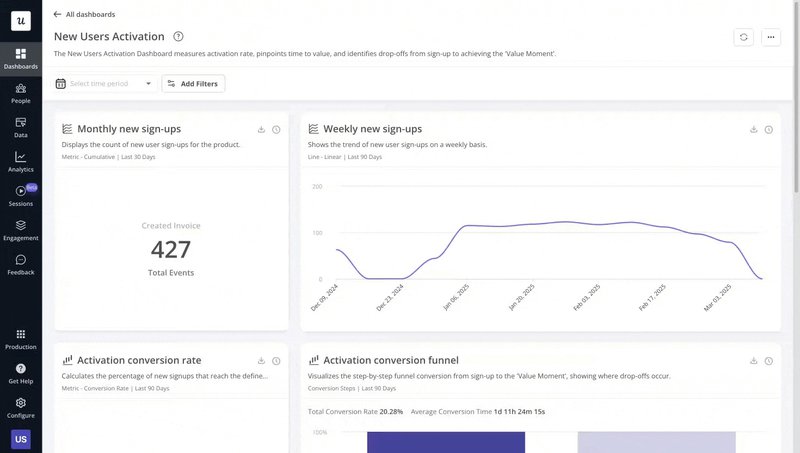
Make first value happen fast
Time to value is a trust metric, not just an onboarding metric. The longer it takes to reach, the higher the risk of churn.
The teams that win remove friction early and guide users to meaningful actions and value. And they are seeing results, converting more customers and onboarding new clients faster:
- The Room increased user activation by 75%
- Sked Social tripled conversion
- Attention increased activation by 47%
You can achieve similar results (compounding customer lifetime value) using Userpilot. Use it to decrease TTV, identify where users get stuck, and guide them to value using templates, checklists, walkthroughs, and behavior-driven nudges.
FAQ
What is the difference between TTM and TTV?
TTM (Time to Market) measures the time it takes to ship a product or feature. TTV (Time to Value) measures the time it takes users to experience value after signing up. One is internal speed; the other is user-perceived impact.
What is a good time to value?
A “good” TTV depends on your industry, but for most SaaS products, 1–3 days is considered healthy. If users don’t see value within that range, activation and retention will plateau.
What is “time to first value” vs. “time to full value”?
- Time to first value: is how long it takes users to experience their initial win (activation).
- Time to full value: is how long it takes users to realize the complete value of your product after deeper adoption.
Faster time to first value helps teams retain customers and improve customer retention rates; full value drives long-term retention.
What are the 4 metrics of customer service?
The most common ones are:
- CSAT (Customer Satisfaction Score)
- NPS (Net Promoter Score)
- CES (Customer Effort Score)
- First Response / Resolution Time
Together, they measure satisfaction, loyalty, effort, and speed.
What is time to exceed value?
Time to exceed value measures how long it takes for users to receive more value than they initially expected. When this happens, customers realize the product delivers beyond its promise, which increases customer engagement and helps teams retain customers.


